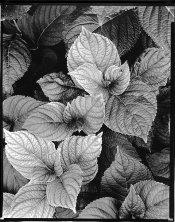keithwms
Member
The main differences between the trad'l and modern films is the appearance of grain, and how that plays with the micro contrast and the appearance of sharpness of tonal boundaries. You can, as most will agree, get whatever you want out of whatever film you have at hand..but that will require some experimentation and quite a few mistakes... What do we call them now? Teachable moments.
Have a look at other people's negs and such - you can't really do that online- and things will become clear. So much of b&w film photography is knowing where your knee and toe are. Once you understand that, you're done... Go out and you can make whatever you want.
Have a look at other people's negs and such - you can't really do that online- and things will become clear. So much of b&w film photography is knowing where your knee and toe are. Once you understand that, you're done... Go out and you can make whatever you want.


















